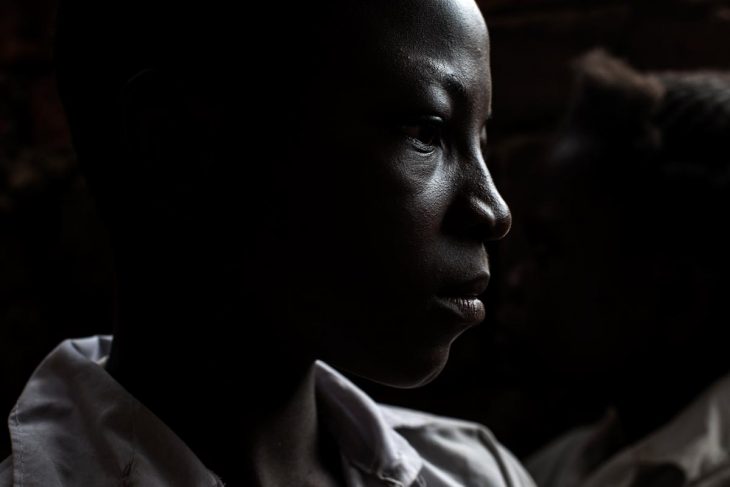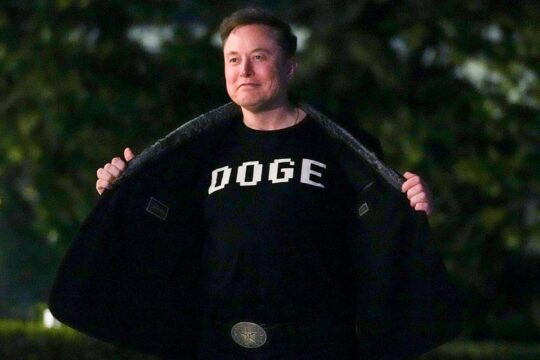Reparations are measures intended as far as possible to acknowledge and remedy victims’ harm by a responsible actor. The ICC and other international criminal law bodies (in Cambodia and in Senegal) have allowed victims to claim reparations against a convicted person, but few victims have so far benefited from such measures, since a conviction is needed before they can claim reparations. Even when a conviction is secured, there are challenges of implementation or politicisation of reparations to which the ICC is not immune. In practice, victims will often never receive reparations or may wait years for them.
At the ICC, only three cases have so far reached the reparation stage, in Democratic Republic of Congo (DRC) and in Mali. All three cases have faced implementation challenges. The first reparation decision, in the Thomas Lubanga case (DRC), was in August 2012, but it has been continually litigated, with a further appeal to be heard later this week. The slowness of proceedings means that victims in this case were under the age of 15 at the time of the crimes in 2003 but are now in their thirties.
In the three ICC reparation cases, the regions concerned continue to suffer from insecurity and conflict, making the delivery difficult. The Lubanga and Katanga cases (DRC) are based on crimes committed during the Ituri conflict in 2002-2003, but recent violence has prevented the full delivery of reparations. There are also community tensions when some victims get reparations and others do not, such as in the Lubanga case which focused only on child soldiers as eligible for reparations, but not those they victimised through murder, torture and rape. In Mali, in the Al Mahdi case, violence also continues to complicate the implementation of reparations.
Funding is another issue. Over €1.5 billion has been spent on investigations and prosecutions at the ICC since its creation, yet funding for reparations has been only a few million, due to the indigence of the convicted persons and limited resources of the Trust Fund for Victims (TFV). While ensuring fair trial rights and the administration of justice are key, it would appear that the international community gives more attention to paying lawyers than ensuring effective remedies for those most affected by the worst crimes known to humanity.
Selective reparations
Perpetrators often have no identifiable assets to be seized to be used for reparations. At the ICC, reparations have to be ordered through funds raised by the Trust Fund for Victims, as all of the three convicted persons were declared penniless. This meant that in the Lubanga case no financial compensation was ordered, in the Germain Katanga case (also in DRC) only $250 was granted to each victim of a massacre, and in the Ahmad al-Faqi al-Mahdi case (Mali), economic packages for victims along with collective and symbolic measures were ordered to maximise limited funds. States and other contributors barely fund €3.5-€4.5 million per year to the TFV, which now has an operating cost of over €4 million.
Other courts have taken their own approach in the face of limited funding, capacity and mandate. The Extraordinary Chambers in the Courts of Cambodia (ECCC) limited reparations to only moral and symbolic measures. Limited forms of reparations have instead been funded and designed by civil society actors and donors, which look more like peacebuilding and service-providing activities than reparations. In contrast in the Hissène Habré case before the Extraordinary African Chambers, only compensation was awarded, as the court did not have jurisdiction over the Chadian government to order implementation of collective measures. While a trust fund has been set up by the African Union to facilitate the €123 million compensation award, it has yet to be implemented.
Limited eligibility
The selectivity of the perpetrators and crimes that are charged and convicted before the ICC necessarily limits the eligibility of victims. Even in cases such as Dominic Ongwen (Uganda) which cover some 70 charges, it only relates to attacks around four areas – Odek, Lukodi, Pajule and Abok. Selectivity means that not all crimes will be recognised and prosecuted. In the Ongwen case, for example, victims who suffered similar crimes are excluded from any potential reparations if he is convicted, such as the massacres in Barlonyo or Obalanga where hundreds of civilians were killed.
This approach necessarily creates a hierarchy of victimhood. In the Katanga case, involving a massacre in Bogoro in DRC on the 24 February 2003, victims are not eligible for violations that occurred before or after this date. The Al Mahdi focused on the destruction of cultural property in Timbuktu, not other violations including sexual violence, torture and murder committed in the area. As such the ICC does not provide full reparation, but a more modest form of redress to victims.
It is worth noting that ‘judicial’ reparations are not a solution by themselves to satisfy victims. Justice and redress are inter-connected with truth and preventing the recurrence of violations, which to be sustainable and comprehensive have to come from within a country and are primarily the obligation of states.
Domestic reparation programmes normally have more inclusive recognition of victims’ harm, which is not dependent on a criminal conviction and the higher evidential burden of beyond reasonable doubt. This is reflected in the 2005 UN Basic Principles on the Right to Remedy and Reparations, in that anyone who has suffered a gross violation of human rights or serious breach of international humanitarian law is entitled to reparations regardless if the perpetrator is ‘identified, apprehended, prosecuted, or convicted’.
Assistance, to redress lack of reparation?
In the face of the collapse of the Jean-Pierre Bemba case (Central African Republic), the victims’ final submission to the ICC highlighted their ‘deep disappointment and hopelessness for not receiving justice’. The assistance that should be provided by the TFV, instead of reparations, is presented as a good news story for international criminal justice, delivering redress directly to those most affected. However, TFV assistance is a non-judicial short term program that only provides basic humanitarian needs of victims, such as micro-financing, some medical rehabilitation and community sensitisation, measures which do not adequately remedy victims’ harm or provide acknowledgement. In the Bemba case, the TFV announced it will offer some assistance to victims of the case to the amount of €1 million, but this falls short of any reparations they would have received if the case had not been closed by an acquittal.
However, the ICC is not a reparations court. As held by Judges Christine van den Wyngaert and Howard Morrison in the Bemba acquittal appeal, “It is emphatically not the responsibility of the International Criminal Court to ensure compensation for all those who suffer harm as a result of international crimes. We do not have the mandate, let alone the capacity and the resources, to provide this to all potential victims in the cases and situations within our jurisdiction…”
States must step up
This good news story of responding to the plight of victims fits well into the imagery of the ICC and victims being saved by the international community and condemnation of the perpetrator. However, such legitimacy work means little on the ground, where victims continue to live with the consequences of international crimes and a government impassive or unable to fulfil its obligations. At the same time, offering reparations as services or collective measures glosses over victims’ rights and risks justice being a humanitarian assistance activity.
As Nader Diab highlights in relation to the hybrid court in CAR, there is a need for reparations to be considered at the beginning of proceedings, not at the end. At the ICC, greater attention needs to be made for realigning assistance provided by the Trust Fund to interim relief during proceedings, and increasing engagement with domestic reparation programmes through reparative complementarity, which the ICC Trust Fund is already doing in Côte d’Ivoire. In addition, there needs to be better identification, cooperation and utility of assets of perpetrators between the ICC and states.
If the international community is serious about reparations for victims of international crimes there needs to be more consideration for an international reparation administrative claims commission or adjudication body over individual perpetrators, corporations, other responsible organisations and states. This is important given the limited supply of reparations by the ICC and need for greater state ownership to deliver reparations.
LUBANGA: AT LAST, A FINAL DECISION

The accused was convicted seven years ago, in March 2012. It’s taken that long for the International Criminal Court (ICC) to work out a final decision on reparations in the case of Thomas Lubanga Dyilo, the former leader of the Union of Congolese Patriots rebel group, convicted of conscripting and enlisting children and using them in armed conflict in Democratic Republic of Congo’s Ituri district. He is serving a 14-year prison term.
Appeals court judges confirmed the trial chamber’s decision for the most part yesterday on July 18. They unanimously rejected the defence appeal and confirmed the US$ 10 million reparations award. “There’s some relief” says Lorraine Smith van Lin of REDRESS, that the court didn’t interfere with the amount. It is the highest reparation award that ICC judges have set yet. 10 times that of former Congolese rebel leader Germain Katanga, which was set at US$ 1 million. Malian national Ahmad al-Faqi al-Mahdi, convicted for attacking religious and historical monuments, was issued a reparations liability of US$ 3.18 million.
Some 425 victims have already been identified. The appeal judges responded positively to the victims representatives, who had argued that “a significant number” of victims were excluded in first instance. Luke Moffett of Queens University Belfast (read Opinion piece) welcomed that judge’s rejection of “the unequal application of eligibility criteria applied to them”. Any victims who had been found ineligible – they were 48 – can now turn to the Trust fund for victims (TFV). “It’s a small win but a win nevertheless” says Smith van Lin. “It is possible that many more victims may now come forward” says Moffett, “even hundreds and perhaps thousands of others”.
In 2016 and 2017 the trial judges had approved the TFV plan on symbolic collective reparations for former child soldiers and some of their relatives. Reparations include construction of community centers and a mobile program to reduce stigma and discrimination against child soldiers. They had also agreed to physical and psychological rehabilitation, vocational training and income-generating activities.
“The real focus now should be on actual implementation,” says Smith van Lin, “we need to get on with it”. With Lubanga unable to contribute himself and an annual budget of less than half the reparations award, the TFV still needs to persuade the states to contribute.
By Janet Anderson, our correspondent in The Hague.
 LUKE MOFFETT
LUKE MOFFETTDr Luke Moffett is a senior law lecturer at Queen's University Belfast, author of the book Justice for Victims before the International Criminal Court (Routledge 2014), co-editor of the Research Handbook of Transitional Justice (Elgar 2017), and principal investigator for the Arts and Humanities Research Council funded program “Reparations, Responsibility and Victimhood in Transitional Societies”.






